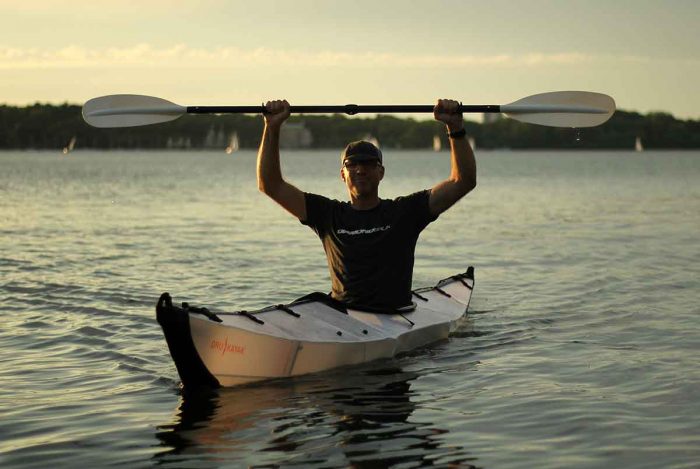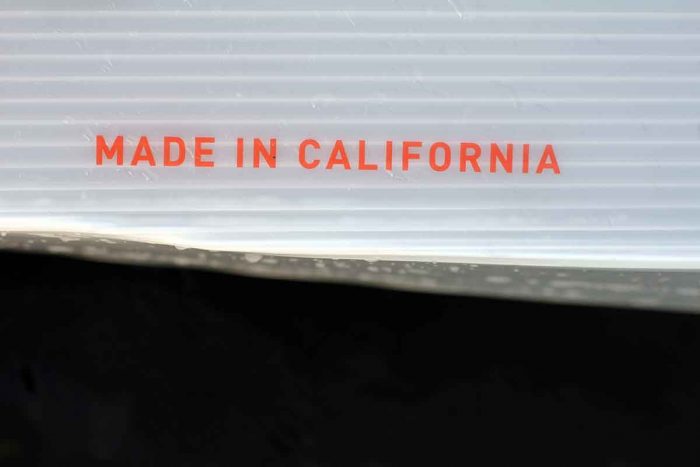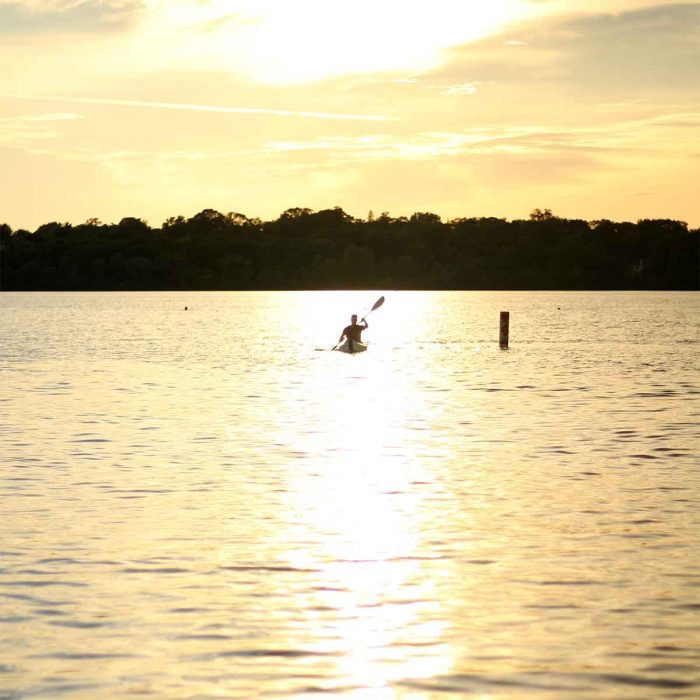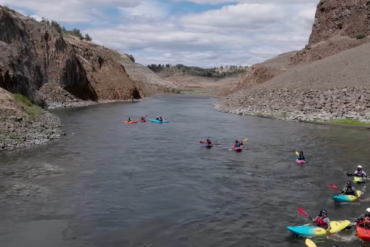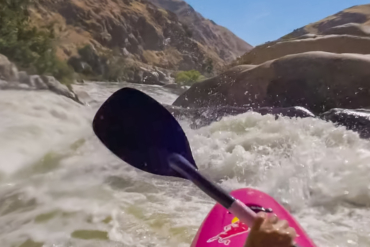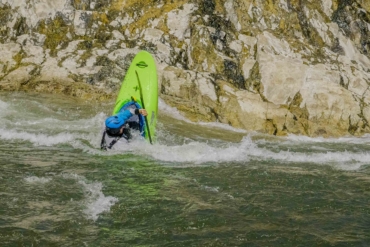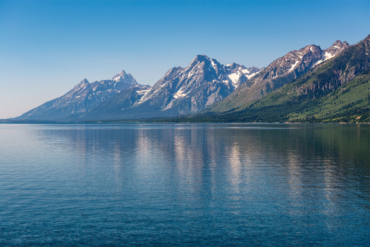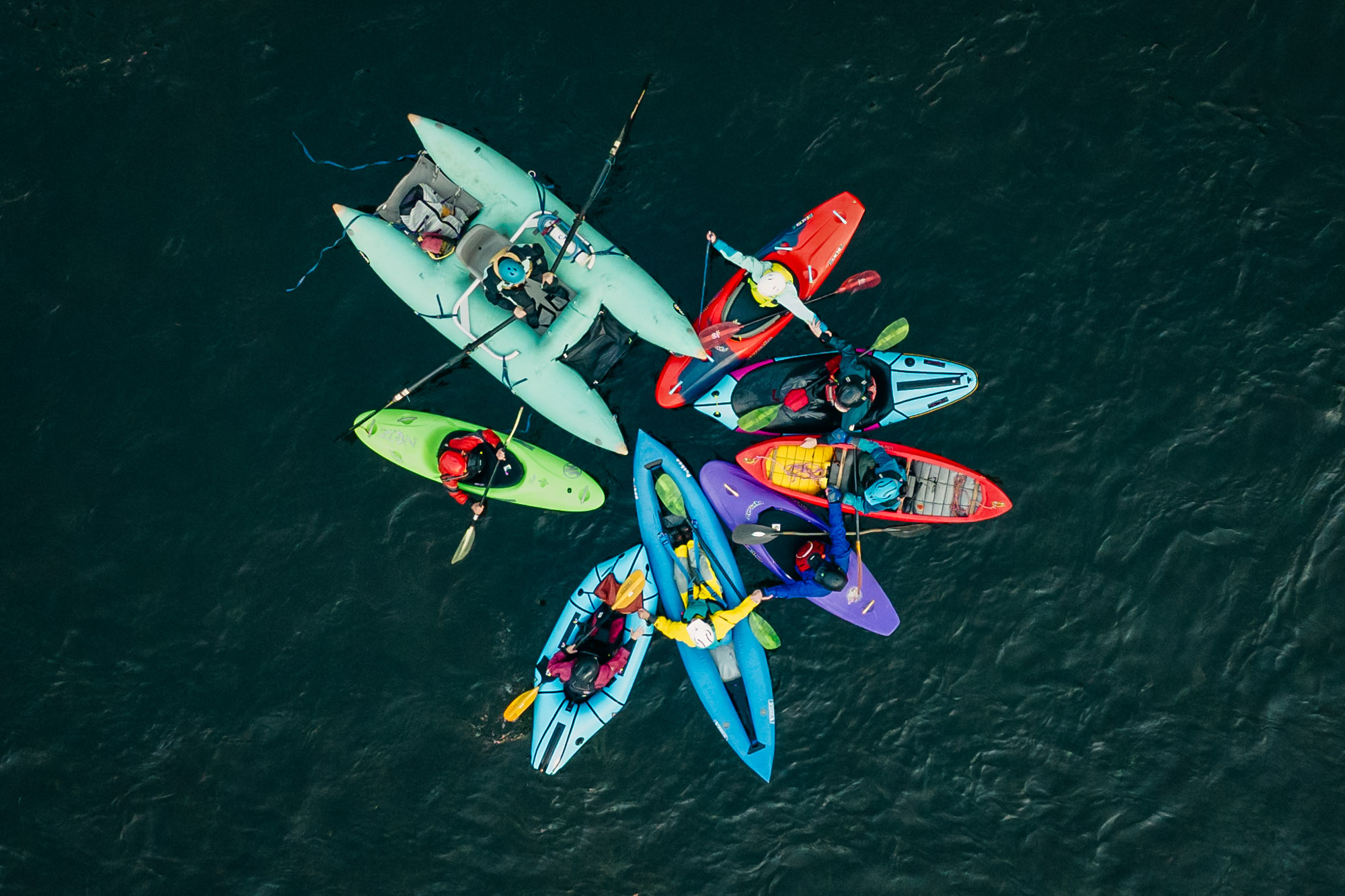The sheet of plastic is scored and notched, an intricate pattern that folds tight and packs up box-shape to fit in a backpack. Undo the package, crease the material at its flex points, and fasten the straps. Soon, a kayak will emerge.
In 2013, a San Francisco startup brought a new concept to the boating world. Its pack-up kayaks employed a light and translucent material that gave travelers and urban-dwellers a new option to store and transport a full-size watercraft with ease.
Today, Oru Kayak Inc. sells five models, each equipped with the rigging, seats, bulkheads, and cockpits you’d expect on a traditional boat. They come in 12- and 16-foot lengths, most with skirt-compatibility to seal a paddler in before heading offshore.
Review: Oru Kayak Bay
I reviewed the Bay model, a $1,275 boat in the middle of the line. It is made in the USA and weighs about 25 pounds, which is light for a boat of its dimension.
The price may seem high for a plastic boat. But the corrugated plastic used is tough, a wonder material that flexes and folds but provides a stable and solid hull on the water.
The company notes its boats were inspired by traditional Greenland kayaks as well as Japanese origami techniques. The end product is indeed a melding of those two, and on the water I was impressed with its performance.
I cut through waves, glided, swooped into currents, and treated the Bay like the sea kayak that it is. Note this is not a whitewater boat: The material is not made for rock bashing in rapids, and the design is built for tracking straight on open water.
Some Assembly Required
Assembly of the boat was frustrating at first. It comes packed in a cuboid ready to be mounted in a pack. The setup is easy to carry around, pack away in a closet or car trunk, and most airlines will have no trouble transporting the kayak as luggage.
But at the lake for my first test, despite watching a nine-minute instructional video (and reading the printed instructions) the setup was hardly pain-free. I forgot to fold in the ends, at the bow and stern, at the beginning and continued to assemble the kayak until the very last step.
At that point, the step to “stretch the neoprene fairings over the bow and stern” stymied my progress. Indeed, I was forced to disassemble the entire kayak and start over at step No. 1 because of a missed moved early on.
After another go, and 15 minutes of work with a partner, the craft was ready to get off the beach. The lesson? These boats take time to learn, and you need to bank extra time for setup at launch.
`Oru Kayak On Water
Offshore, the Oru has the feel of a “real boat” — because it is one. The kayak is responsive and fast, its light weight and sharp keel letting me paddle up to full speed in seconds. It’s stable and tracks straight but is nimble enough to lean and brace.
The cockpit is tight, and the seat is comfortable enough. There are foot braces. A semi-translucent hull filled with folds gives the illusion that water could seep in. But inside I never found a drop.
A note on sizing: The cockpit isn’t super spacious; taller people may find their knees bowing out against the edge of the cockpit rim. It’s rated for paddlers up to 6’3’’ and has a max weight bearing of 300 pounds.
Taking Oru Apart
Disassembly is a bit more intuitive, as you simply retrace your steps from assembly. Make sure to let it dry out all the way; there are creases and folds where water can collect.
Important: Take the boat apart on grass or dry, non-sandy land. You don’t want to pack up a kayak covered with grit and debris.
It fits easily into an Oru Pack (sold separately), which has padded shoulder straps, a hip belt, handles, a large zipper, and compression straps for additional gear.
At about 25 pounds, the load is manageable but wide and a bit awkward. It looks like a bouldering pad for rock climbing but the boat can be hiked with or carried through an airport with ease.
Who Should Buy Oru Kayak
Look to buy this boat if you need to save space. That includes people who live in apartments or journey in an RV. You can stuff this boat in the trunk of a car, too.
Or check out Oru for travel, be it on an airline, train, or overland by your own power. You can hike (and maybe even bike) with this kayak on your back. Get to the water, get the boat unfolded. Once set you have a seaworthy craft ready to paddle any wave.






